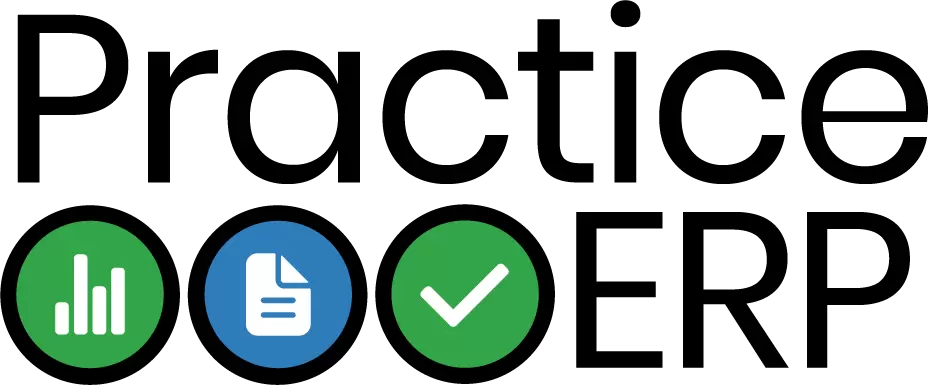Whitepapers
Business Guide
Tailor-Made Enterprise Resource Planning for Growing Accounting Firms
As competition in the accounting field heats up and new regulatory rules emerge, CPA firms need unified ERP systems that factor in their unique needs and help them operate more efficiently, effectively, and profitably.
Accounting firms rely heavily on spreadsheets, manual processes, paper, and basic software systems, and as a result, the industry is ripe for a technological overhaul. As they work to stay abreast of rapid regulatory changes, usher clients through the complexities of new programs like the PPP, and attract top-notch talent to their teams, Certified Public Accountant (CPA) firms need unified technology platforms that can run all facets of their businesses.
“The pain point on every CPA firm’s mind right now is rapid law change,” said Tim Moy, CPA, Managing Partner of MBE CPAs, a professional accounting firm with 11 offices in Wisconsin. Some of the laws that are currently going through the regulatory approval process, for example, include rules that will be retroactive to January 2020. “That changes the rules backward by over 15 months.”
Managing those changes won’t be easy for CPA firms whose technology and workflow are stuck in the past. “The legacy software companies have not innovated to deliver the ERP systems that are needed today, and none have developed good dashboarding,” said Moy. “I can’t think of any software program that I use that boils it down to a dashboard. Instead, I get a bunch of Excel reports weekly that I have to manage from.” This business guide explores the CPA firm’s most critical pain points. It explains how a unified cloud enterprise resource planning (ERP) solution tailor-made for the accounting industry helps organizations save money and time, improve efficiencies, enhance productivity, and support their clients’ ever-changing needs.
Held Back by Their Technology
In the U.S., more than 138,000 accounting firms generated over $110 billion in revenues in 2020. Small to midsized firms with anywhere from 30 to 200 employees rely heavily on disparate technology systems (e.g., one for tax preparation, one for timekeeping, another for the firm’s financials, etc.) and spreadsheets to run their businesses.
“We repeatedly hear from CPA firms that are burdened by multiple systems that don’t ‘talk’ or share data,” said Dirk Shimpach, CPA, Founder, and Partner, said goVirtualOffice (GVO), a NetSuite Solution Provider and Cloud Technology Advisor. “Most use different systems they patched together to manage their day-to-day operations.”
The same firms also face increased competition for new customers and employees, who expect their CPA firms to have innovative technology. That technology isn’t just for show either; it’s an invaluable tool for managing the complexities of financial compliance, audits, and ever-changing governmental regulations. Even the seemingly straightforward act of completing and submitting a tax form on time requires numerous steps and checkpoints.
On the operational side, CPA firms must maintain good oversight over client billing, budgets, and actual spending. “Margins are tight in the accounting world, so monitoring budgets versus actuals is critical,” said Shimpach. “This is much easier to handle when you have the data at your fingertips, but it’s tough when using disparate systems and attempting to bring all relevant data into a single report.”
Answering the Call
Developed by GVO for CPA firms grappling with too many spreadsheets, manual processes, and disparate systems, PracticeERP extends NetSuite’s functionality to help CPA firms specifically boost sales, enhance productivity, access better information, and reduce their IT costs.
By delivering a complete suite of accounting firm-focused functionalities in the cloud, PracticeERP helps companies connect the dots across CRM, client services, workflow/task management, time/expense tracking, work in progress, billing automation, accounting, financials, and business intelligence.
The solution also includes a dashboard that CPA firms’ clients can use to view accounts receivable and print customer statements, pay invoices online, and submit customer support questions.
GVO typically takes 100 days (or less) to implement PracticeERP for a new client. The solution includes sales dashboards for lead, prospect, referral, deal tracking, activity tracking with automated reminders, and integrated marketing automation and nurturing. Because CPA firms manage most of these activities manually, these CRM benefits can be substantial for a CPA firm. For example, PracticeERP streamlines the lead-to-cash process, provides real-time visibility into customers’ pipelines, makes business forecasts more predictable, and helps improve sales performance. Using the solution’s total client views, CPA firms can view all client information from a single screen accessible from a mobile device.
Focused on making life easier for CPAs and allowing them to focus on their jobs, PracticeERP optimizes tasks like workflow, time entry/approval, work in progress (WIP), and billing processing and approvals, which must go through multiple different steps before being submitted to the IRS or other tax authority. “The average CPA firm we work with does about 8,000 tax returns annually,” said Shimpach. “Firms need to be able to manage tasks at a very granular level across all of their resources —something that can’t be done using spreadsheets or simple task management.”
A Leap Forward on the Technology Scale
Historically, MBE CPAs have used CCH for timekeeping and billing, XCM for workflow management, and Abel’s industry-specific CRM. “Previously, we accumulated our time by client, dumped that data into Excel spreadsheets, and then created a PDF for the manager,” Moy explained. “That manager went through and marked up the PDF, and we retained a summary on a spreadsheet. We will now be able to automate all of that.”
Moy sees practice management—or the management of the front- and back-office operations for accounting firms—as another business area ripe for innovation. “It seems like our industry is stuck in a static state when it comes to practice management,” said Moy. “Once PracticeERP is in place, I think the platform’s dashboards are going to knock the socks o the practice management side of our business.”

Moy was also looking forward to leveraging PracticeERP’s real-time data capabilities and the ability to filter and drill down into data that’s historically been stored on Excel spreadsheets. “Every Monday, we run a bunch of reports, distribute them and then use them to report on individual performance,” said Moy. “It’s nice to be able to share that data in real-time so that our associates are ‘living’ it every day versus waiting for a report.”
Because they have no collateral on their accounts receivables (AR), CPA firms also grapple with aging that extends past typical thresholds. In fact, Moy said it’s fairly common for 20%-35% of open invoices to extend out over 90 days. “Our industry is historically very bad at managing AR,” said Moy. PracticeERP’s automated invoicing processes, statements, and reminders are reversing that trend for MBE CPAs.
“It’s not just about the payment process optimization,” he said, “we also want to use simple functions like automated reminders or a reminder to a billing manager to follow up with a phone call.”
Moy sees MBE CPAs’ tailor-made ERP breaking down some of the operational silos across his company’s 11 locations. Time, billing, and forecasting are three areas he’s particularly interested in improving. “Most CPA firms have an accounting solution, but because their time and billing isn’t connected, they’re spending time doing journal entries into their general ledger ( ) software,” said Moy, who appreciates how PracticeERP has fixed this pain point while also helping MBE CPAs create more accurate forecasts and projections based on real-time data. “In the accounting world, predicting future revenues is difficult,” said Moy. “We want to track clients through a CRM and then have a dashboard of predicted upcoming revenue based on new clients added or lost, which would be huge.”
What’s the Payoff?
Using PracticeERP, CPA firms can expect anywhere from 25% to 40% in savings by eliminating the costs associated with disconnected systems while getting the added benefit of automating processes that were once handled manually. Month-end WIP, billing, and invoicing take a few hours instead of days, and the need for manual data reentry is completely eliminated.
Because the solution automates workflows, task management, and other functions, the other benefits that CPA firms can expect range from improved client relationships to efficiency improvements to productivity gains. These “wins” can help CPA firms stand out in their increasingly-crowded, fragmented industry.
“At least for now, there’s still a lot of disparate systems and dual data entry being used across the board in the accounting field” said Shimpach. “The firms that want to maintain a the competitive edge should focus on the efficiency gains that come from implementing modern, unified technology platforms. The more efficient they are, and the better their data is, the more successful these companies will be when compared to their peers.”
Level up your productivity
Get started today and improve your workflow.
